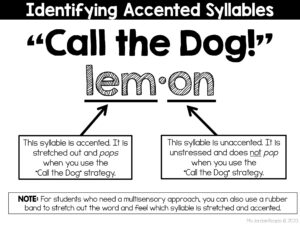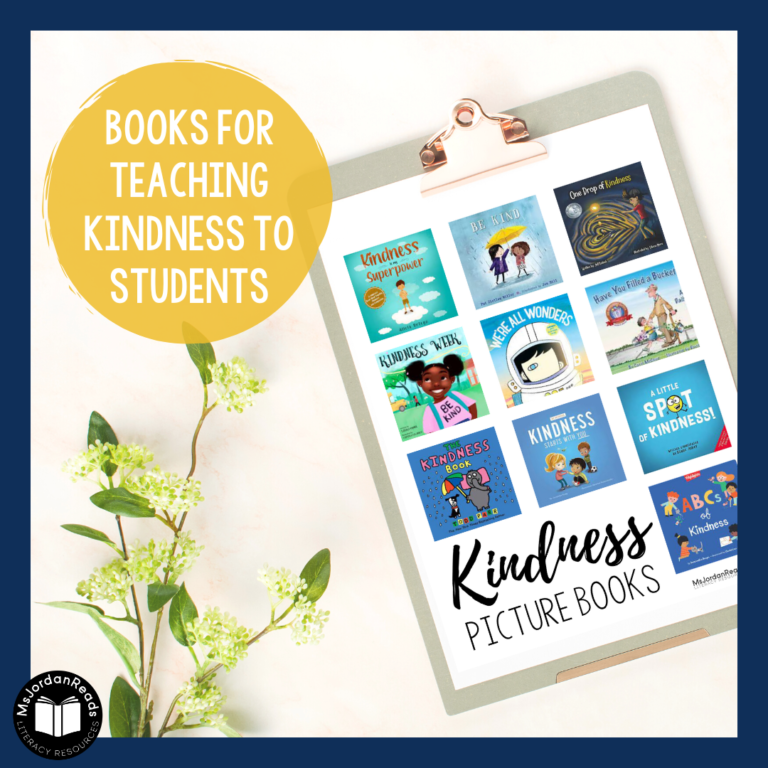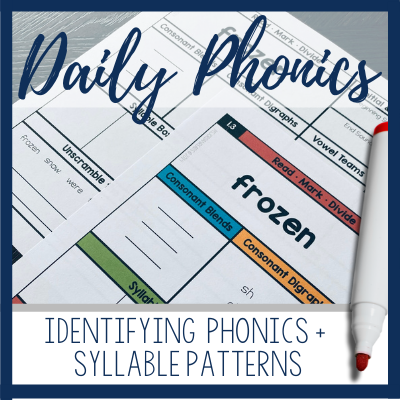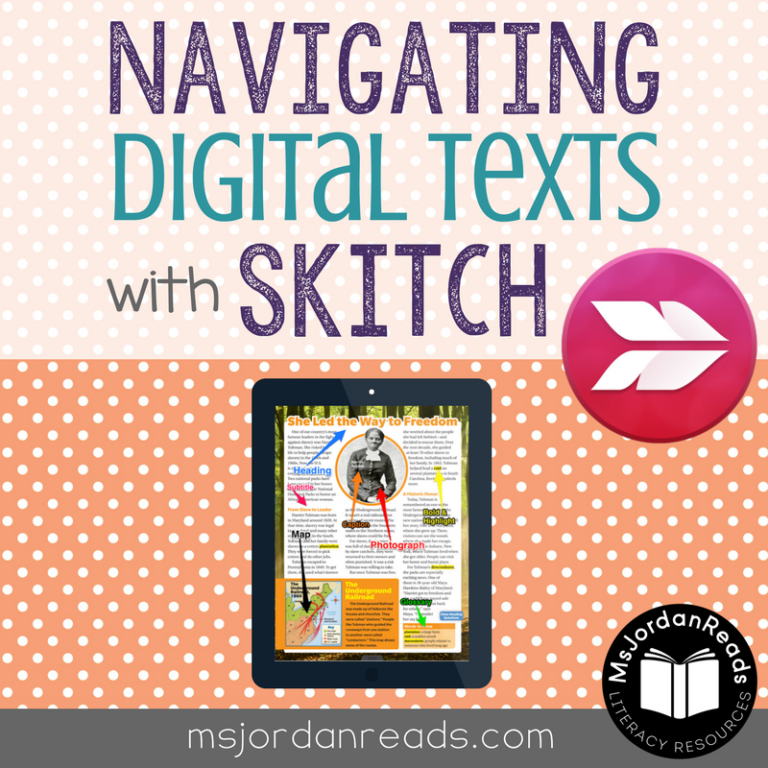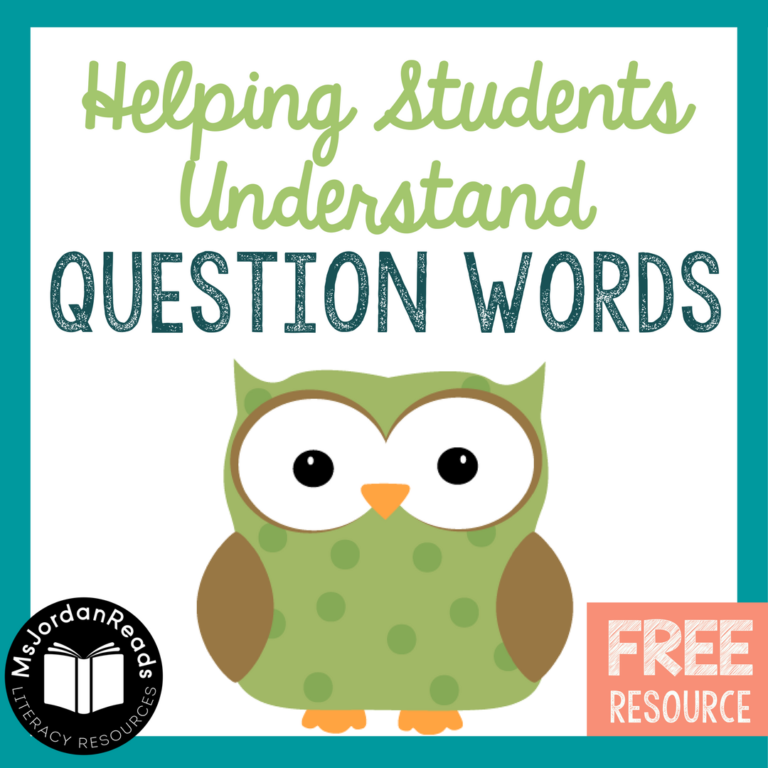Unlocking the Mystery of Schwa: The What & How (Part II)
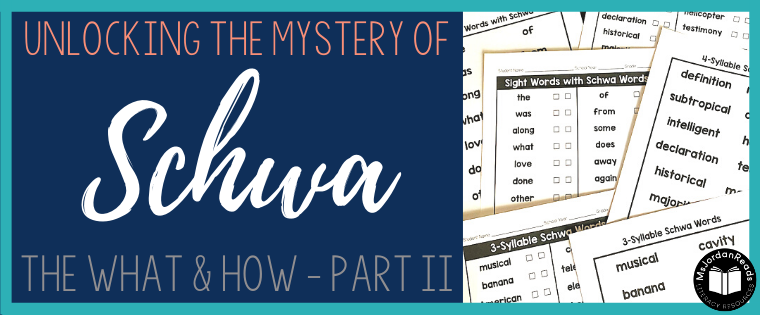
In Part I of Unlocking the Mystery of Schwa, we talked about the WHAT of schwa. This post will provide a follow-up to Part I and will get into the HOW. Specifically, we’ll be looking at how to teach students to identify schwa within a word and how to spell this unstressed sound using common schwa patterns. Suggestions for both decoding and encoding schwa will be provided! (Not sure what “schwa” is? Go back and read Part I in this series!)
Decoding Schwa
Just to review, schwa is the relaxed vowel sound that is often found in multi-syllable words and function words. It often sounds like “ih” or “uh” and can take the place of any vowel in an unaccented syllable. Even though it’s a tricky sound, students CAN train their brains to identify unaccented syllables and recognize common schwa patterns. With lots of explicit teaching and practice, we can help our struggling students build confidence in decoding schwa words automatically and with more accuracy.
Identifying Unaccented Syllables
Since the schwa sound dwells in unaccented syllables, it’s important to teach students about accent and stress. There are many strategies for helping students distinguish stressed vowels so that they can better identify the accented and unaccented syllables within a word.
- Rubberband Stretching – Stretch out a rubberband while stretching out the word. The syllable that stretches the rubberband out the most is the accented syllable!
- Humming – Hum the word instead of speaking it. The highest pitch often corresponds with the accented syllable.
- Kazoo – For a little extra fun (although maybe slightly obnoxious!), have the students speak the word through a kazoo. Just like humming, the higher pitch identifies the accented syllable.
- Call the Dog – This strategy is my favorite and the one I use the most with students. Students pretend to shout the word as if they’re calling their dog in from the backyard. For example, if the dog’s name is Blossom, they would call out the name “Blooooooossom!” and notice that the first part of the word is stretched out the longest, showing that the first syllable is the accented syllable. The students think this is hilarious, especially when they’re calling for their dog named Banana. (Below is a FREE poster to help with the “Call the Dog!’ strategy.)
(This poster is sample page of my Schwa Clip It Cards resource which can be found in my website shop or TpT store.)
Once the students are able to identify the accented and unaccented syllables, they will be more able to recognize the schwa sound that takes over vowel sounds. Keep in mind, in most two syllable words, the first syllable is the accented syllable. The accented syllable is always pronounced clearly and says what it’s supposed to. Since we tend to speak quickly, the vowel in the unaccented syllables often changes and that is where you will frequently find the schwa sound of “uh” or “ih”. You may even find that sometimes when we speak quickly, the sound is skipped all together, like in chocolate (“choc-late”) or family (“fam-ly”). Having this knowledge will help students start to automatically recognize common schwa patterns.
Common Schwa Patterns:
There are a few common patterns or “generalizations” that help students learning to decode words that include a schwa. The location of the schwa becomes more predictable and will help students identify where to find the schwa and how to spell it.
- Closed O/A – In a two syllable word, the second syllable is usually the one that is unaccented. If that syllable is CLOSED, it is often spelled with a schwa A or O before the final consonant (e.g., blossom, lemon).
- Vowel-L – Any vowel followed by an L at the end of a multi-syllable word will change it’s sound to a schwa (e.g., equal, animal, travel).
- Open A – An open A at the end of a word will always change to a schwa. An open A at the beginning of a word will only change to a schwa if it’s unaccented (e.g., banana, adorable).
- Open I – This open syllable exception is often known as “Crazy I” (OG) or the “Confident Rule” (Barton). Words like animal, pelican, hesitant all include an open I that have a schwa sound.
- Open E – An open E in the middle of word may also change to a schwa in an unaccented syllable (e.g., enemy, elegant).
Various phonics programs and Orton-Gillingham approaches introduce schwa generalizations in different ways, but the spelling patterns are all the same. Regardless of the instructional sequence or the names of the schwa spelling “rule,” the importance of learning this tricky phoneme remains constant.
Spelling Words with Schwa
Spelling words with schwa is more challenging than identifying the schwa, especially since a schwa can take the place of any vowel. Students can learn to spell many schwa patterns using generalizations. Similar to many reading skills, it just takes a lot of repetition and practice.
On a side note, I highly recommend the use of a spell checker. I use the Franklin Spelling Ace with my students, but there are definitely cheaper versions available that are just as good! There are many extensions and tools that can be used for spell-checking on the computer, as well.
Developing Your Schwa Toolbox
I will admit, after years of teaching schwa, I still dread teaching it. It’s just so challenging. I can visibly see the frustration in their faces when we’re going through practice activities and they can’t discriminate the sounds or they can’t pick the correct vowel spelling. Cheer them on and assure them that it does get easier! Especially as they build their visual recognition of common schwa patterns.
Building up your toolbox of strategies and tools is incredibly helpful before you kick off teaching this tricky sound, but be prepared for the frustration. It honestly just takes a LOT of repetition and practice.
What’s in my Schwa Toolbox?
There are many easy-to-implement activities that you can use for practicing decoding and spelling schwa.
- Clothespins – My students love using clothespins in our lessons! For practice, I give them a set of word cards with various schwa spelling patterns. They then use one clothespin to mark the accented syllable and then additional clothespins to mark the schwa vowel in the unaccented syllable(s). (Check out my post about using clothespins to mark the schwa inside of words!)
- Coding – Another great phonics “tool” is marking vowels and syllables so students can code the schwa. First, students will write the word on a whiteboard, work mat, or a piece of paper. I typically have my students mark the vowels with a “v” or even a simple dot underneath, but you can also have them just circle the vowels. Knowing that every syllable has a vowel, students then look between each vowel to divide the consonants. Students need knowledge of syllable types and syllable division rules to do this. Once the word is divided into syllables, they can identify the accented and unaccented syllables. I have my students mark the schwa in the unaccented syllable(s) with the schwa symbol (upside down e).
- Letter Tiles – Using magnetic or foam times, you can have students build words that include schwa. After they tap out the syllables, I have them mark the schwa with the schwa symbol using a letter “e” tile or leave a blank in schwa vowel’s place until they can work out which vowel to use.
- Syllable Boxes – I use an orthographic mapping board from Sarah’s Teaching Snippets that helps students map the sounds and spellings of each syllable. I then have them mark the schwa with the schwa symbol! (You can also use this resource for mapping individual sounds within words!)
- Clip-it Cards – I have two sets of Clip-it cards that I use for schwa practice. One just focuses on identifying the accented syllables and one focuses on identifying schwa. Both are an additional fun way for students to practice!
Additional Resources
If you’re looking to save some time, feel free to check out the comprehensive Stress-Free Schwa assessment and practice resource that I use with my students to help with decoding and encoding schwa. It includes teacher assessments, word lists, student practice pages, instructional activities, and so much more. It’s all student-tested and materials that I use with my own struggling students. It goes along with any Orton-Gillingham based program and will support your phonics instruction.
Not interested in the complete resource? That’s OK! Be sure to go back to Part I in this series to scoop up a FREE instructional poster and poem that will help you get started with introducing schwa!
Unlocking the Mystery of Schwa – What & How: Part I
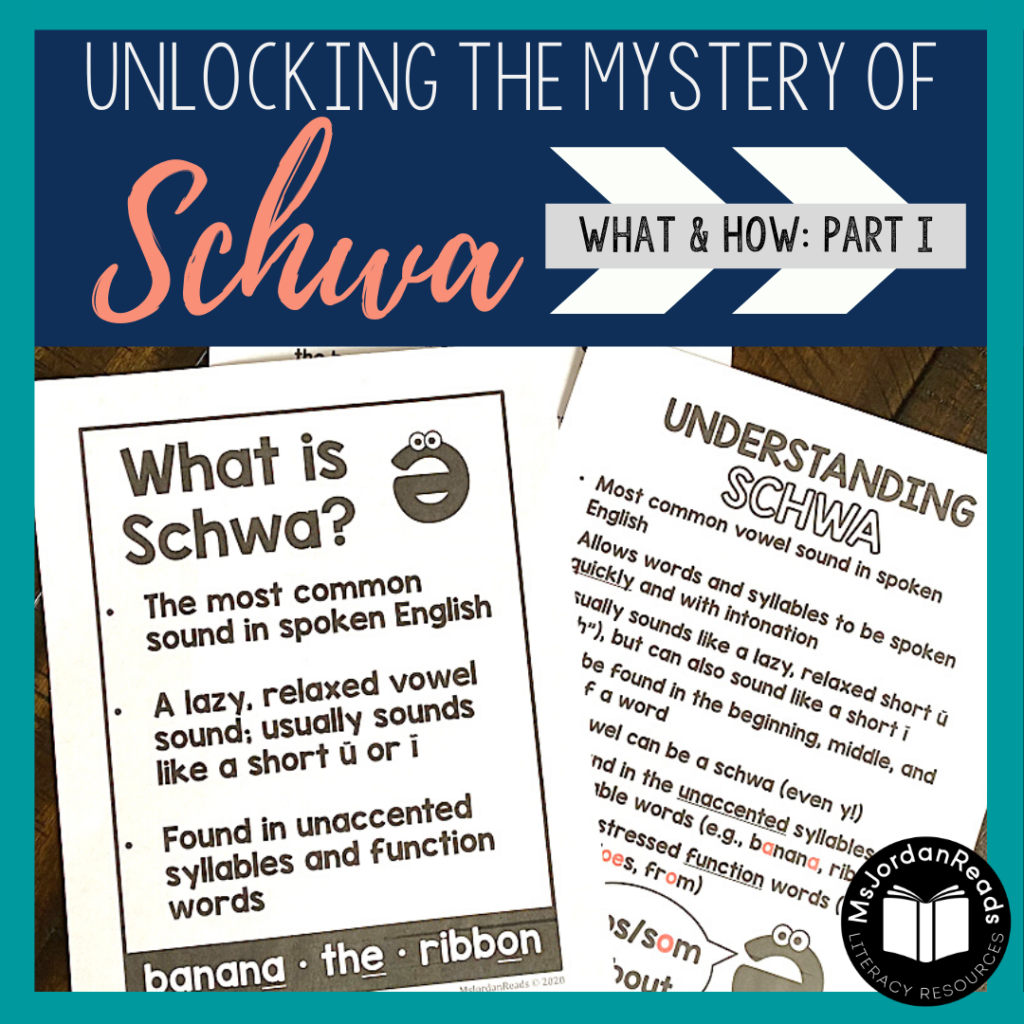
—
Happy Teaching!


